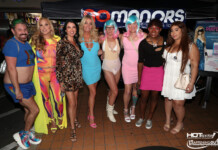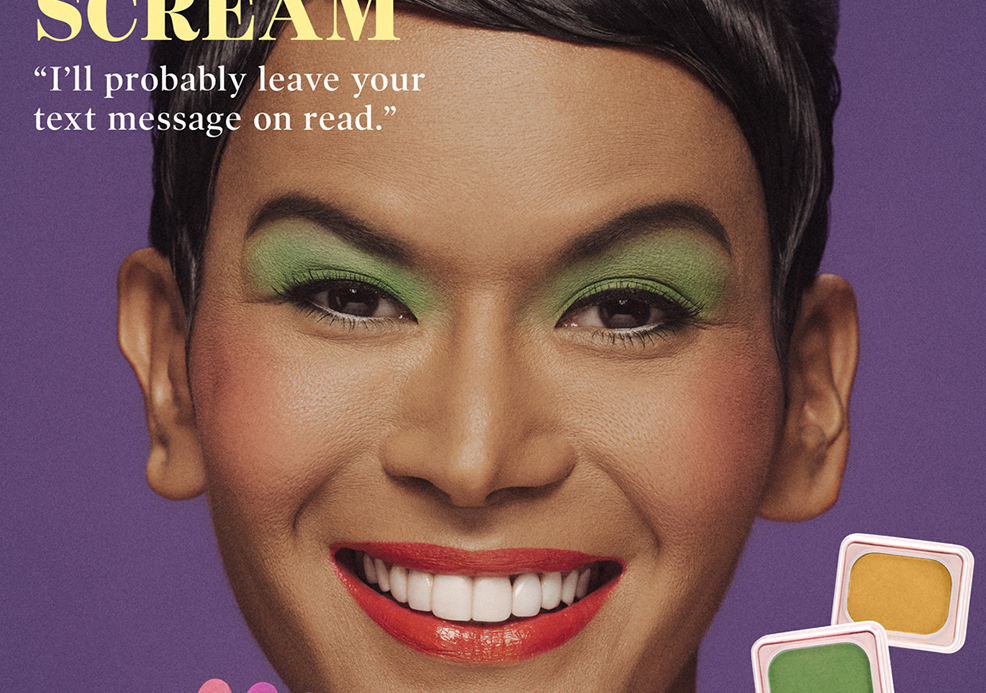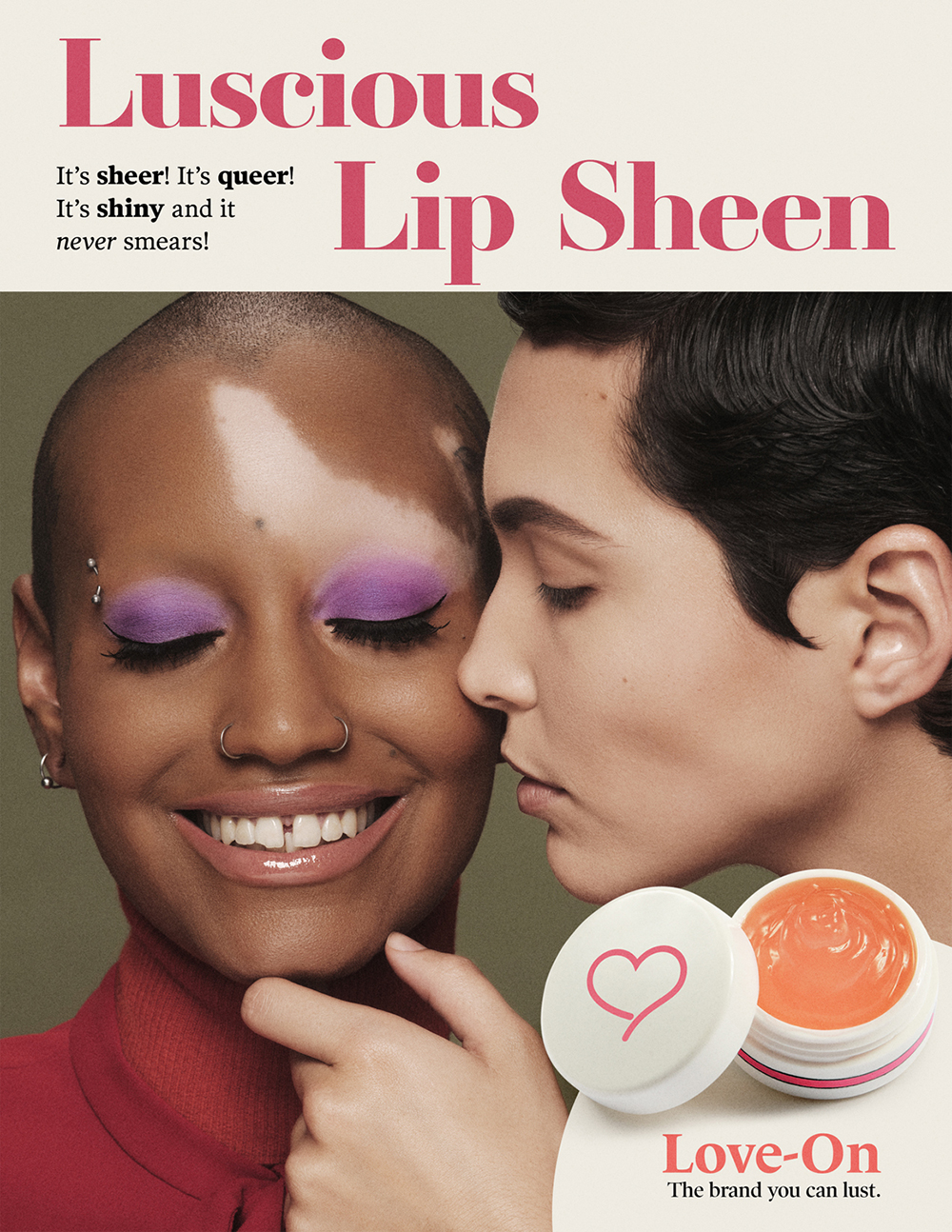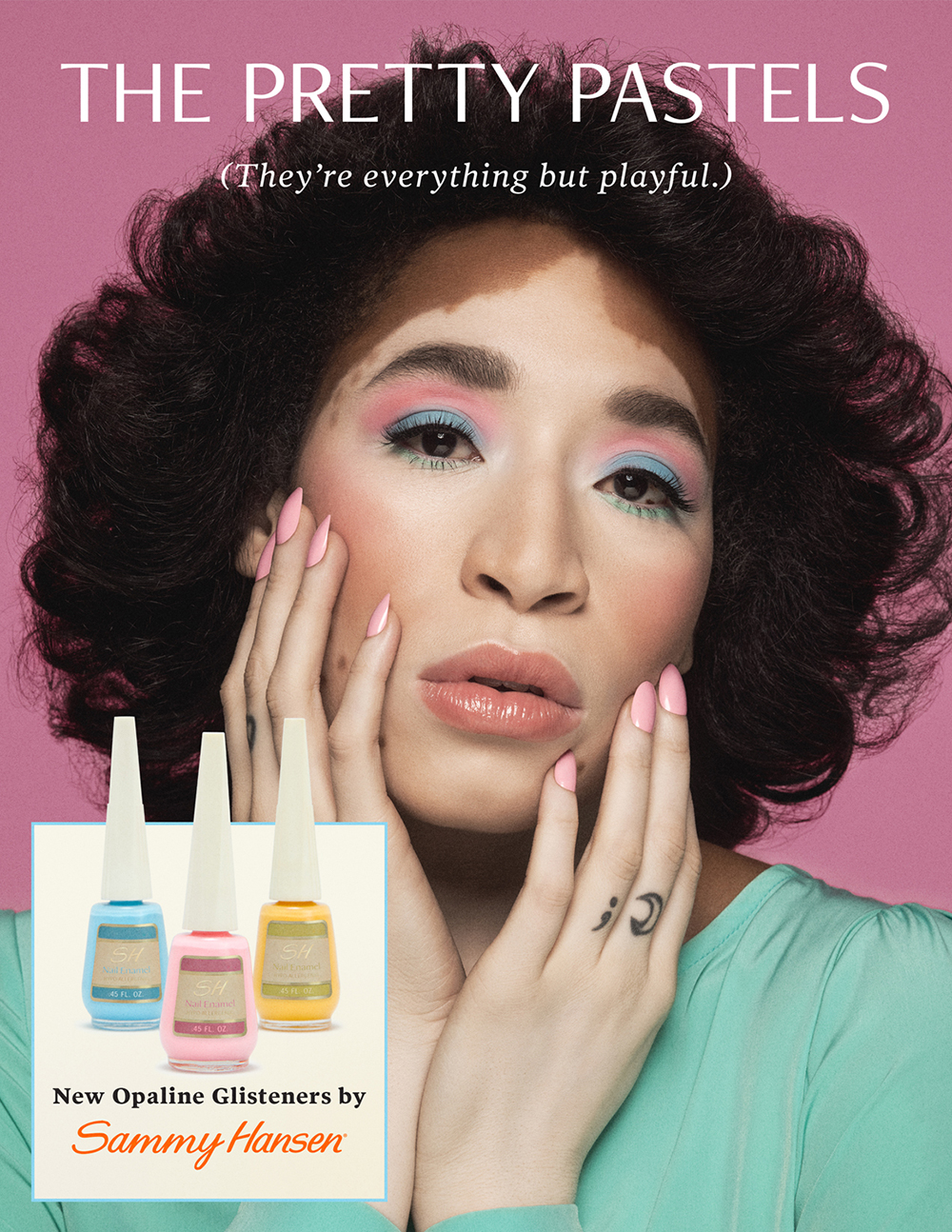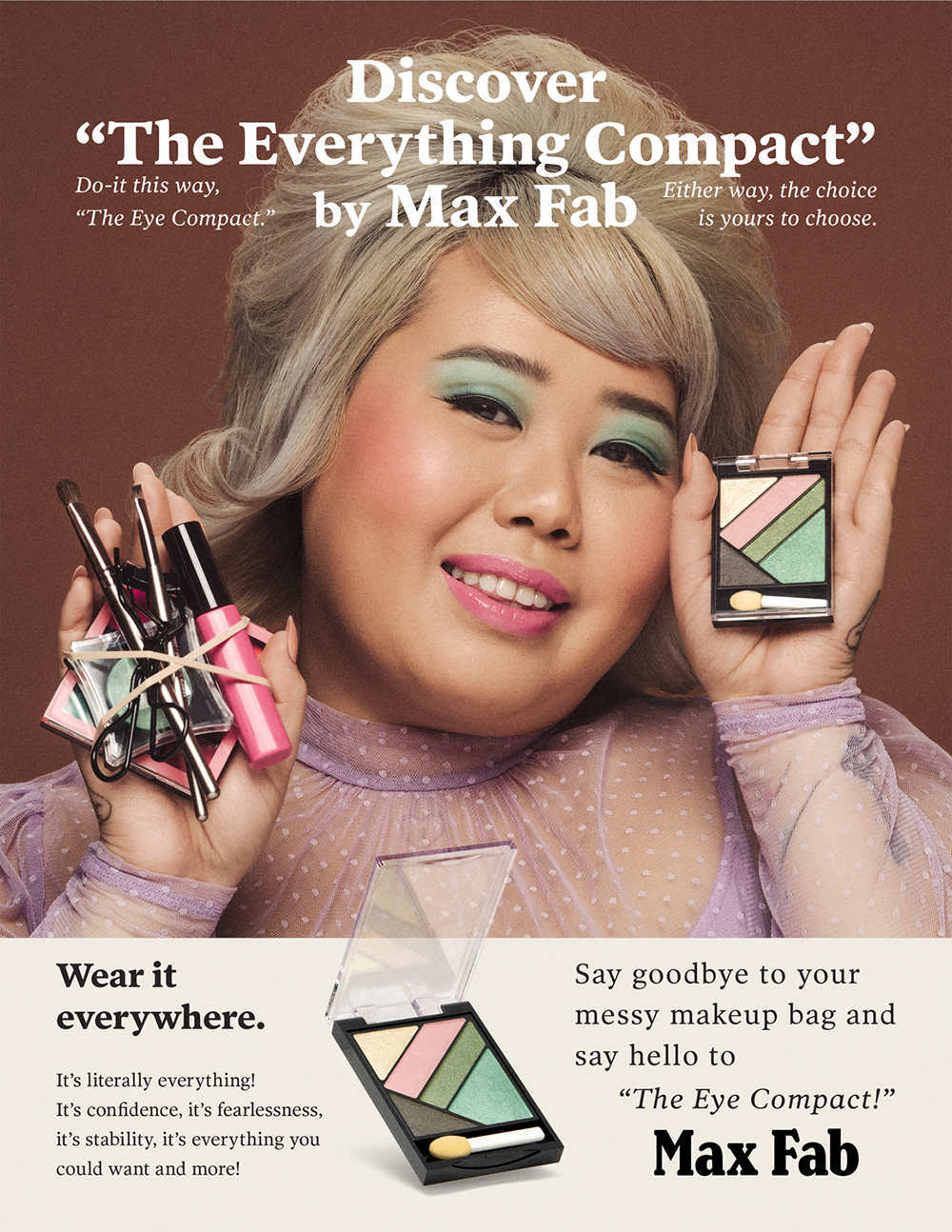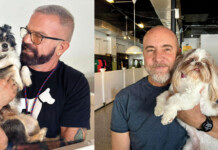Without dispute, the ’70s were an iconic fashion decade. Tie-dye, floral, bell-bottoms, mini (and maxi) dresses. It’s not hard to pick out a seminal trend whose influence can be seen even in mod-ern-day wear.
But despite its fun fashion, the decade idealized white standards of beauty, largely leaving out anyone who didn’t meet the mold of skinny, cisgender female models. Now, with “Prim-n-Poppin,” which officially launches today, New York-based photographer Julia Comita and makeup artist Brenna Drury have imagined a world that better reflects the diverse world we live in.
The online project is a series of reimagined vintage magazine ads that includes models of various races from the body modification, vitiligo and body positivity communities. But it’s not only rep-resentative of physical diversity. “Prim-n-Poppin” showcases five reimagined vintage beauty ads that also highlight models with ranging sexual orientations and gender identities.
It includes detailed interviews with each model and allows viewers to access a detailed resource list of allied companies and organizations that value beauty just as much as the emotional health and well-being of the people who are interested in fashion today, unlike the antiquated original source material.
Recently, Comita and Drury shared why inclusivity is as important as ever in fashion today, what it was like breaking modern makeup rules to create the project, and why seeing diverse represen-tation in these vintage ads brought out an emotional response in both the project creators and the participating models.
Where did the name for “Prim-n-Poppin” come from?
Julia Comita: We like that name because “prim” is sort of alluding to the vintage portion of it. You know, more old-school and more proper, if you will. And “poppin’” is more alluding to pre-sent-day. It is a combination of the two. And it’s just a fun title.
What was the process of coming up with the idea?
Brenna Drury: We met through Instagram. I messaged her to collaborate. That was in early sum-mer 2019 and I made a few mood boards, three of which were more along the beauty lines of pops of color and fresh skin. And then I threw in the vintage advertisements, which were just colorful fun. We started with that and agreed that we would like to do something a little bit dif-ferent. And then, while looking through the vintage advertisements, we were picking up on the undertones like how non-inclusive they were, and just the more conversations we had, we were able to narrow it down to exactly what we wanted it to do.
Once the project was completed, what did you feel when you saw all the diverse faces repre-sented in this traditionally exclusive way?
Comita: Very emotional. I don’t know, it just makes me smile. If I look at all the original ads all together, from a surface-level perspective I might be like, “Oh, those are funny.” But if I really look at them, I don’t feel good because it doesn’t feel correct. It feels very one-sided. So, seeing all of the faces together now, it makes me feel kind of emotional because this is the world we live in. Especially in New York City, we go out the door and we see so many different kinds of peo-ple. These are our friends.
Drury: We would love to expand on the project, of course, but it’s a start to seeing the adver-tisements as how I see my world today, which makes me very happy.
It’s great that the concept of diversity extended out to sexual orientation and gender identity as well. How did you find the LGBTQ models featured in “Prim-n-Poppin”?
Comita: There are a number of great agencies out here that are catering to a more diverse group of people. There’s places like “We Speak” that we pulled talent from. They even have a whole category in their roster for fluid. And “Slay” was another agency that we cast from; Slay is the first exclusively transgender agency. I actually didn’t know those agencies before we did this project. This was something Brenna and I had talked about. Brenna did a lot of research and sent some agencies to my attention and we were able to find everyone except for Cory (Walker), who did the soap ad, who I was referred to from another project a few months before who I shot with. I just really loved their energy, and they photograph really well.
Was there an artistic challenge that was unique to shooting this project?
Drury: For me, I wouldn’t say it was a challenge, but the makeup aesthetic was obviously differ-ent during that time, and the way that I like to do makeup now is skin-forward. Back then it was more caked on, so it was an adjustment to put that much makeup on my clients. I knew that it would read how I wanted it to read, but that was the only thing for me.
Comita: I don’t know if I would call this an artistic challenge per se, but I guess one of the things that was different about this project was making sure that everybody was being a little bit silly or over the top. We’re not asking them to model to make themselves the best they can look; it’s more about, “Let’s get the feeling across of this picture and what we’re trying to communicate.”
Drury: Posing was something that we talked a lot about, whether it was like they were selling the cellphone and it was like this (pained smile). Now, it’s just more casual, but I feel like there was a period of adjustment when the talent was getting out of their normal modeling state and being just, like, extra. (Laughs.)
Did you find yourself breaking all the modern makeup rules of today?
Drury: (Laughs.) Well, just eyeshadow all the way up to the brows that’s the same color — these things that I would not do to my clients right now. But that was also the fun of it, to do some-thing like that.
Comita: Totally. There are few times where you want to go balls to the wall with everything. Things are more understated now because it can look really tacky (laughs), but in this case, that was the most appropriate direction. So, I think we were all doing things stylistically that we wouldn’t be doing otherwise.
Drury: In Kaguya, the one where she had all of the makeup (in her hand), a few of the people that we showed it to once it was done, there was a question of like, “Is that rubber band sup-posed to be there?” It’s funny because that’s not something you would find now, but in the orig-inal ad, that’s exactly what it was.
What do you hope will be the first impressions of people who get to really sit down and take a look at this? Do you think they’ll be tricked at first into thinking it’s a real vintage ad?
Comita: That would be cool! (Laughs.) I actually shared this with a friend last night, and he is in the queer community as well and he’s Black. And he was saying that, for him, looking at the pic-tures it was as if they had always been there. And that was a really special response. I would love for that to be the case. It would be great if people looked at them and thought, “I could have seen this then.”
Drury: I would (love) people seeing it to feel a sense of comfort.
Comita: And community.
Eve Kucharski is a Seattle-based journalist.


